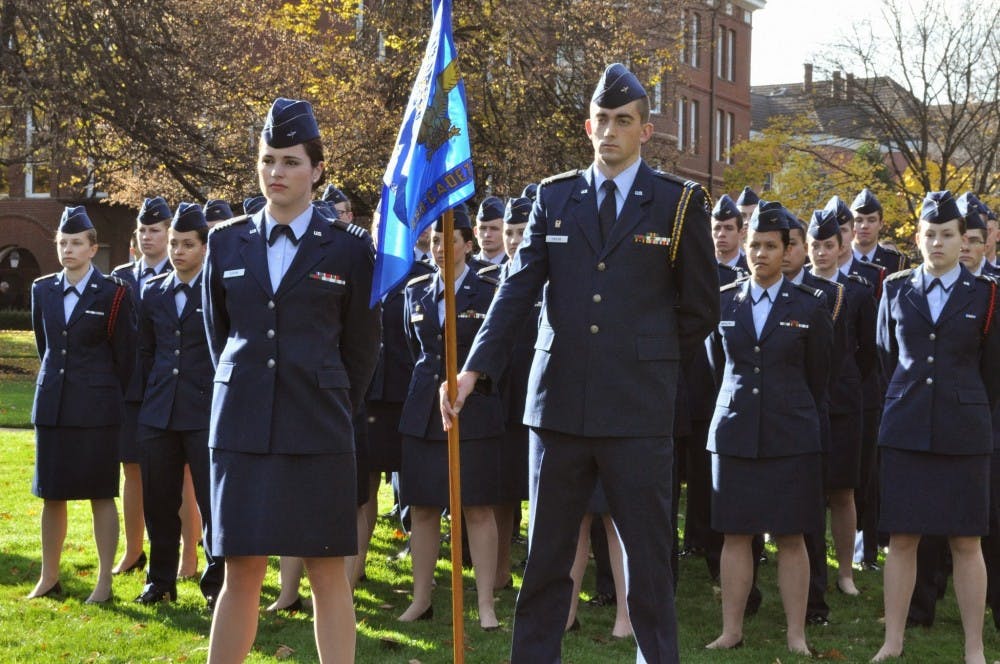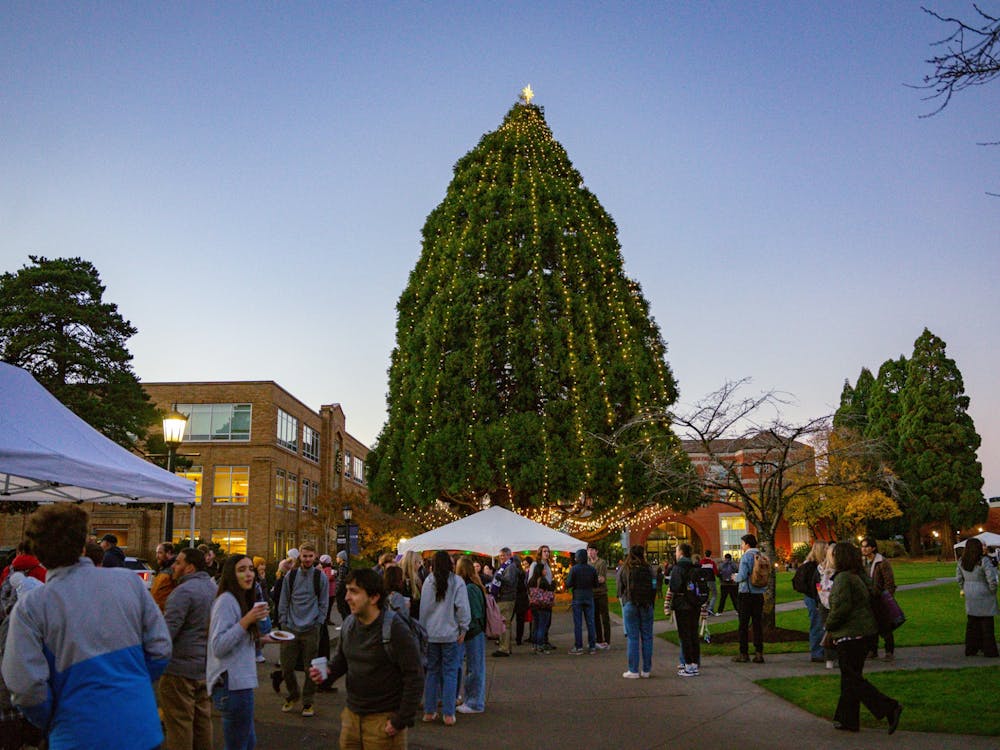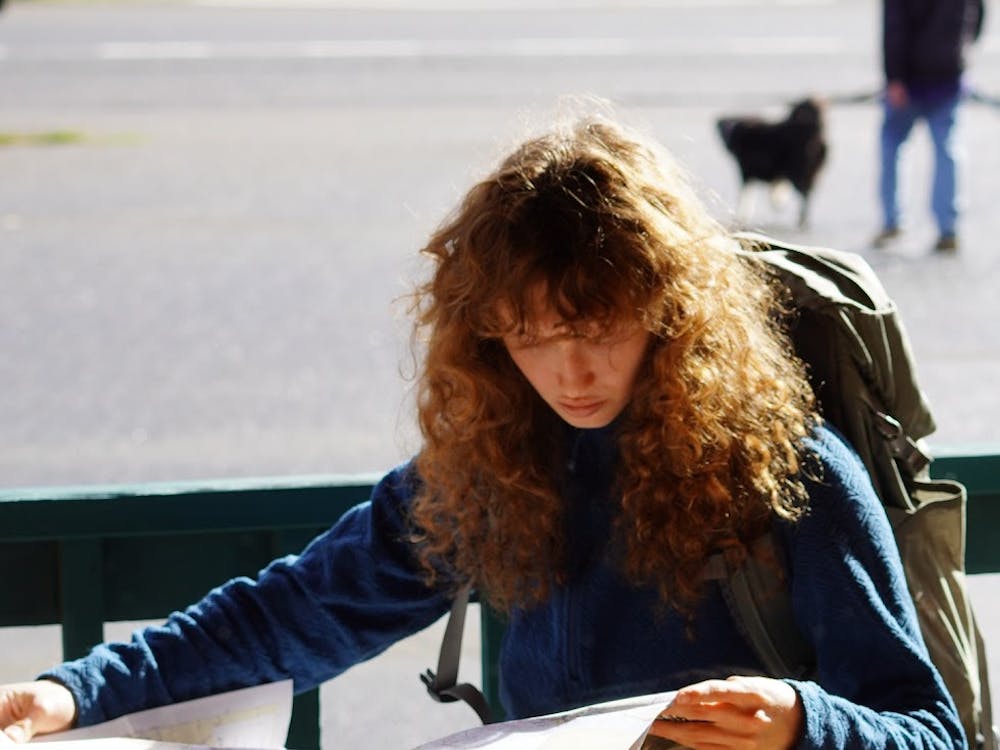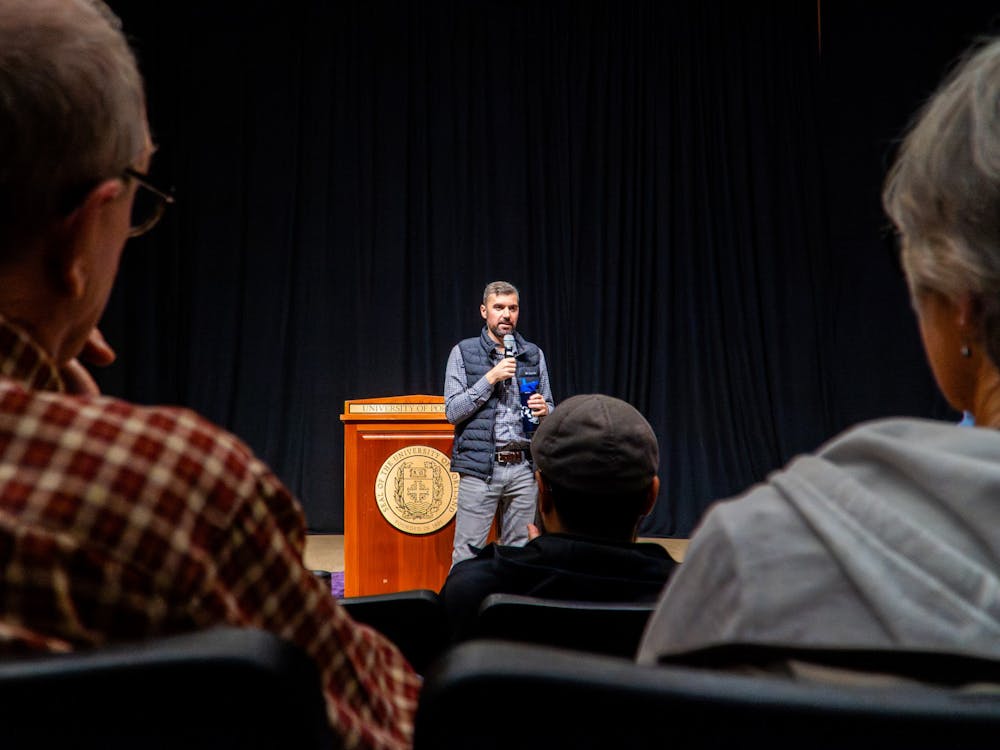By Kate Stringer |
It was a clear, warm Sunday afternoon in Italy the day Charles Edward McChrystal sat down to write a letter to his parents, a letter he probably hoped they would never have to read.
Perched atop a hillside on that November afternoon in 1944, McChrystal, who had graduated from UP the previous year, penned a letter that he’d been postponing since he began basic training for his career as a United States soldier in World War II.
It was a letter of gratitude for the little things. The mornings his dad would take him to school. The nights his mom waited up to make sure he was safely home before falling asleep.
It was a letter that expressed his conviction that the war he fought was for a cause bigger than himself.
“Please don’t have any regrets … Everyone must do his part. For many of us, that part may seem insignificant, but the fact that we’re all doing all we can makes it a lofty effort,” McChrystal said.
It was a letter he would send to his parish priest in Salt Lake City, with the request that he forward it to his parents in the case that he didn’t make it through the war alive.
The priest delivered McChrystal’s letter to his parents one month after he wrote it. McChrystal was killed in France on Christmas Day, 1944, during a special mission for the intelligence department.
McChrystal is one of 80 student names etched into the bricks of the Praying Hands Memorial. These students’ stories, along with those of veterans past, present and future, were honored Monday at the Veterans Day Ceremony in front of the Memorial.
“Twenty three million veterans are alive in the United States today,” Brig. Gen. Steven R. Beach, guest speaker at the ceremony, said. “You need to look for them and find them and actually get them to share their stories.”
A shattered memorial, a shattering war
A 24-hour vigil preceded the ceremony, in which UP Air Force and Army cadets took turns standing flanked on opposite sides of the memorial.
The Praying Hands Memorial was a gift from the class of 1948 to commemorate their classmates who served and died in WWII. It was designed by 1948 graduate Frank Gilman, also a U.S. Navy veteran.
The Broken Wall Memorial was added to the 1948 memorial in the early 1990s to pay tribute to the students who fought and died in World War I, the Korean Conflict, the Vietnam War and the Persian Gulf War.
Designed by Michael Florin Dente, a fine arts professor at the time, these additional four crumbling brick walls symbolize “the harshness of war, the shattering effects of those who fought and the country as a whole,” according to a 1990 article in The Oregonian.
The ceremony included the playing of taps and a three-volley salute, where seven cadets each fired a series of three blanks into the morning air.
For junior Jane Crotteau, the Army cadet tasked with planning the event, the vigil and ceremony is another way to reconnect with the reality of war and veterans who have participated in it.
“This is just another way we can kind of tie ourselves to what’s going on in the real world and what happened,” Crotteau said. “Remembrance tying you back into what has happened.”
Student soldiers
It’s easy to forget that college life was interrupted for many students during wartime.
After the Christmas holidays of 1942, many students and faculty went to military camps and defense plants instead of returning to The Bluff, according to the Summer 1989 issue of Portland Magazine. Most men over the age of 18 were called to war. A total of 1,415 Columbia Prep (the original name of University of Portland) and UP men and women served in WWII, according to a Sept. 5, 1994 issue of The Beacon.
During the Vietnam War, professor Thom Faller, who has taught since 1964, noticed that University of Portland students weren’t as active as many of their college peers in protesting the war.
While there were a small group of pacifists on campus, most students were supportive of the Vietnam War, according to Faller. He recalls a time when reporters, who discovered that most UP students didn’t participate in a Vietnam protest that took place in downtown Portland, approached Bishop Waldschmidt, the president at the time, to ask why.
“Bishop Waldschmidt said ‘Our students are very practical. It’s final exam week - if they went down and protested they know that they would miss their final and they might not be able to make it up and getting their grades in was more important to them than being downtown protesting,’” Faller said.
Veterans Day ceremonies like Monday’s help remind people of the history of war and veterans’ service, according to junior Jaclyn Bieber, an Air Force cadet.
“From the standpoint of cadets, the people who are going to serve, it’s important for us to know the history and why we’re doing what we’re doing,” Bieber said. “It’s important to understand that there have been others who have gone before us who have sacrificed their lives to defend the freedoms of our country. Whether or not you agree with our government, at the end of the day we are here to protect the citizens.”
Building connections through stories
Beach reminded his audience that veterans in service in the U.S. is lower than it has been in the past. While the amount of veterans serving in the Revolutionary War, the Civil War and WWII was about 10 percent of the U.S. population, the current number of veterans has decreased to seven-tenths of a percent of the population.
With the number of older Veterans disappearing, Master Sgt. Eric Chastain emphasizes the importance of storytelling to honor their service and memory.
“Go find that crusty old guy who fought in the war and talk to him,” Chastain said. “Say ‘Hey, what’s your deal old man? Why are you so grumpy?’ And he’ll tell you.”
While some people might feel wary of asking about stories from the battlefield, Crotteau urges students to take the chance.
“You may think that ‘Oh, they don’t want to talk to me, they won’t want to share,’ but people will always, they always like to talk about (their experiences),“ she said.
A symbol to the testimony of veterans’ stories hangs in Chastains office: the St. Crispin’s Day Speech.from Shakespeare’s “King Henry V” play.
Chastain revisits this speech every year as a reminder that the purpose of Veterans Day is both remembrance and celebration.
“It talks about every year, on this day, we’ll meet and give embellished stories about our feats in battle, and they probably never happened. And (the embellished storytelling) still happens today,” Chastain said. “It’s a pretty cool speech and it’s something I read to my boys every year. Veterans Day is not a day to be sad, it’s a day to celebrate.”
The speech also pays tribute to the unique sense of brotherhood military members share with their fellow comrades.
“We few, we happy few, we band of brothers; / For he to-day that sheds his blood with me / Shall be my brother.”
A time Lt. Col. Matthew R. Little experienced this sense of brotherhood was when he ran the Army Ten-Miler in Washington D.C. in 1999, and saw people he knew from the Army about every two miles.
“At eight miles, I looked up ahead of me and I recognized somebody from the back of their head because I went to the military academy at West Point and I’d stood behind him for a whole semester.” Little said. “You’re just in ranks and there’s nothing else to do, so you’re just standing there and you’re looking at the guy’s head in front of you. So I was there from August to December, looking at Alex.”
Chastain says the inherent qualities of military members are easily identifiable.
“You bump into somebody in an airport and you can tell by the haircut, you can tell by the way people walk,” Chastain said. “I walk with clenched fists and I don’t even think about it, that’s just the way we do it. And you can see who people are and you just automatically gravitate towards them. On those days it’s a chance to reach out to those you haven’t talked to enough.“
While Chastain views Veterans Day as a time of celebration, he points out Memorial Day, as well as the anniversary of the deaths of his friends, is a time of solemn remembrance.
Chastain says he’s had 15 close friends die overseas.
“On those days I call my buddies up, we post about it on Facebook and talk about it,” Chastain said. “It’s kind of cool, it’s somber, it’s a moment of introspection I think.”
To the 80 students remembered on the crumbling red brick walls and the countless veterans elsewhere, Beach offered his concluding remarks.
“Remember them. Always remember.”








